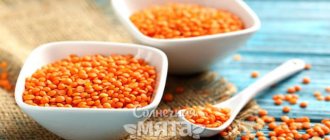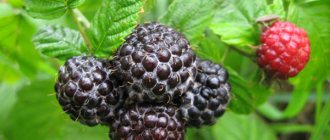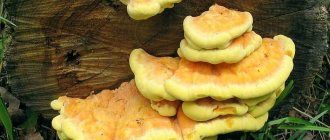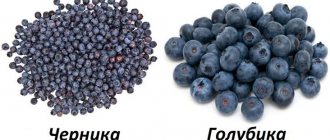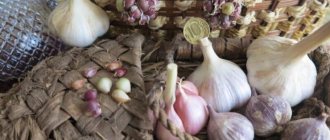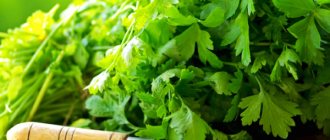There is another version, which says that turkey is the name given to birds living at home, and turkeys are wild birds. The turkey lives primarily in the United States of America, as well as in some parts of Mexico. The bird is omnivorous and is accustomed to nesting in forests. It is believed that wild turkey meat is much tastier than domestic turkey meat, because the usual diet of turkeys includes nuts, insects, fruits and vegetables, and not just grains, which fills the bird’s body with nutrients.
Option of supporters about the similarity of the concepts of turkey and turkey
From Ushakov’s Big Explanatory Dictionary it follows that the names of female turkeys do not differ from each other. The correct dictionary word is turkey. A turkey is popularly called a bird, often in rural areas. That is, the difference between the concepts is zero.
Advice: The presence of words with the same root “turkey poults”, “turkey” and other similar ones gives the right to exist for the word “turkey”.
The dictionary states that the bird designations turkey and turkey are synonymous. A female turkey can be called by at least one word, at least two. The only difference is that biology gives its own definition of the bird family; birds are called turkeys. According to this fact, it is correct to call a female turkey a turkey.
Differences for determining the sex of a turkey
Before sex can be determined, the farmer must decide on a method. There are several signs on how to determine the sex of turkey poults:
- Overall length and the presence of a characteristic mark on the plumage;
- Nuances of behavior;
- The structure of the scallop, the presence of a pronounced beard and developed spurs;
- Total weight of an adult representative.
In the first month, males develop small beards, their feathers are stiffer, and their beaks are larger and larger than those of young turkeys. The male is heavier than the female. Boys' tail feathers grow and develop at a rapid pace. You can also determine the gender by the rate of growth and development of the individual: boys increase their total mass faster, turkeys grow and develop a little slower.
Differences for determining the sex of a turkey
Length of feathers on wings
The sex characteristics of the chick are determined by the length of the feathers on the wings. Moreover, you can start using the method from the age of one week. Boys have the same length of wing feathers, but turkeys have different lengths. As it grows, it levels out, so it is important to use this method only in the first days of the turkey poults’ life.
Interesting! To clarify who is in front of him, the poultrykeeper takes the bird by the wing and carefully examines it, focusing on the feathers of the outermost row: if they are even, then it is a turkey; if the row is uneven, then it is a turkey.
Features of behavior
Another way to distinguish turkey poults by gender is to notice behavioral signs. Boys are aimed at constant protection of their offspring. If birds are going to protect a brood of chicks, then these are males. Young turkeys often start squabbles among themselves and express their superiority in the fight for the female by staging fights.
Differences during puberty
During puberty and hunting, young males express themselves very aggressively. Poultry farmers try to stop fights at the very beginning, isolating the cocky turkey from other individuals. Strangers suffer from such aggressive birds.
For your information. When breeding turkeys, you should not mix birds of different ages, communities and breeds.
Sexual maturity of turkeys occurs in 190-220 days. Constant laying of eggs lasts 3 months. The ability to actively mate appears in turkeys at the age of 9 months. There are cases when hardy female turkeys become pregnant without the participation of males, that is, artificially. This method of fertilization turns out to be effective when males are sick, weak, or when breeds are incompatible.
Behavior before mating
Before the sexual hunt, the behavior of the turkey boy and the turkey changes, at this time it is easy to distinguish one from the other. The turkey starts flirting with the opposite sex. She performs attractive dances, signaling her readiness to mate. Many experienced farmers say with confidence that turkeys carefully choose their partner; they are not indifferent to who will be the father of their offspring. They choose the only one, only then begin the courtship dances.
Behavior in a pack
On a note! Upon reaching sexual maturity, females begin to actively form flocks, contact their companions, and act as an aggressor. In a pack, male aggressive behavior is typical for girls. Men behave calmly, isolate themselves, and do not enter into conflicts. In the poultry yard they behave sedately.
Behavior in a pack
Differences in the crest and “earring” above the beak
The male turkey has a striking crest of burgundy tone, while the turkey has a pale pink or orange crest. Turkeys of both sexes have projections above their beaks. Feathered boys have a pronounced process on their beak, which is larger than that of a turkey. The turkey's growth is barely noticeable.
By voice
Turkeys have a pronounced bubbling voice; turkeys do not have this feature. There is a popular method of clarifying gender: whistle loudly, if there is an answer, it means a turkey.
Difference in plumage
Males are distinguished by their bald, scarlet head. Females have down, the volume of the head is much smaller in boys than in males. The bare neck of males is longer.
Important! The smallest newborn chicks can be identified by their plumage, such as their breast feathers. The boy's are rough, the turkey's are tender and sparse. Male turkeys have richer feathers than females.
By the feathers on the tail
The tail of delicate females looks inconspicuous, while in males it is striking. The tail feathers of male turkey poults are even and neat.
Differences in special gland
In 5-month-old boys, a special gland can be felt that looks similar to a wart. The hidden gland is quite dense; when feeling the females, nothing unnecessary is detected. This method is great for farmers, at this age turkeys begin to be weaned from turkeys.
Differences in the presence of spurs on the legs
Sharp spurs on developed legs are a sign characteristic of boys. The girls are beardless and have strong spurs only in exceptional cases.
Differences in the presence of spurs on the legs
Differences in litter size
Interesting! The shape of the litter determines the gender characteristics. Boy turkeys produce dense droppings that form a "J" shape. In females, feces are formed in the form of a slide.
Option for poultry farmers, for whom the difference between words is visible
There are opinions that point to the difference between the concepts of turkey and turkey. And the version of such statements is not unique. Often the word “turkey” implies that it is meat that has been baked in the oven. Confirmation of this theory is supported by examples from Russian classical works, for example, in Chekhov’s book this is the name for ready-made fried food.
The turkey is a living organism. In proverbs and aphorisms of Russian writers, this concept is used when they talk about a person who speaks incomprehensibly, mumbles, since turkeys make incomprehensible, not very pleasant sounds, with which they compare slurred human speech.
Cooking
One way or another, turkey and turkey are almost the same thing. Poultry has been used as food for a long time. It is rich in proteins and has dietary value. They prepare it in different ways. For example, in the United States for Thanksgiving, it is stuffed with cornbread, fried in the oven, and topped with cranberry sauce. In England, on New Year's Day, turkey is also baked, but it is stuffed with minced pork.
Turkey can be used to prepare many dishes
Cooking the meat usually does not take much time because the meat is quite tender. Moreover, there are many ways to prepare dishes from it. I stuff the breasts with vegetables, mushrooms, and nuts. Meat kebabs are no less tasty. Turkey meat is drier, but also very tasty.
Thus, there are many theories as to whether turkeys are different from turkeys or not. Be that as it may, this bird has very tasty meat, so it is worth growing it at home.
The difference between concepts according to the habitat of turkeys
There is an opinion that domestic birds are called turkeys, and wild birds are called turkeys. But the meat is called turkey in any case, and the difference in taste is not noticeable at all.
Households are mainly engaged in the cultivation of hybrids, when different biological species were crossed to obtain one breed. Turkey meat is a valuable dietary product along with rabbit meat and guinea fowl meat. Its tenderness, taste and benefits are valuable. The carcass has white meat on the back and breastbone; the legs, wings and neck produce a slightly smaller amount of red meat.
Avid hunters love to shoot wild turkey. Since gun hunting is prohibited during the bird mating season, traps are set for the birds. Wild turkeys are native to the United States. Its free diet includes grains and acorns, as well as fruits, berries and vegetables. It is believed that wild turkey carcasses are more tasty than domestic ones. They hunt them during the day.
Wild heredity is often observed in domestic turkeys. For example, during the period of oviposition, a female finds secluded places so that her owners do not see her, this gives her a feeling of security, and the instinct of preserving the species is triggered. Poultry can also fly, which requires keeping them in closed or highly fenced aviaries and pens. But you shouldn’t limit the space to the point of cramping, otherwise it will affect the well-being of the wards.
Tip: Turkey meat can be boiled, fried, baked, or made into broth or jellied meat. Despite the difference in size between females and males in favor of turkeys, turkey meat is more noble and tender in taste.
Methods for determining the sex of adult turkeys, what a turkey looks like
A turkey is considered an adult if it has reached the age of 1 year. It is at this time that the main differences between turkeys and turkeys become noticeable.
These include:
- Corals. These are leathery growths along the bird's neck. In turkeys, the transition from carcass to neck in coral begins earlier, causing the neck to appear longer.
- Plumage on the head. The head of males is completely devoid of feathers or has a minimal covering of short, stiff feathers. The turkey's head is covered with soft down.
- Chin. Turkeys have a leathery pocket on the lower part of their neck. In one-year-old turkeys, the pocket is indistinguishable from the neck. You can see it only by lifting it with your hand. The turkey's pocket sags by 2-3 cm.
- Growth on the beak. Approximately in the middle of the beak of turkeys there is a small leathery horn. Turkeys have a small horn, rarely exceeding 3 cm. Popularly this growth is called an earring. It is larger in turkeys than in turkeys. But the determining factor is not the size, but the color. The bright red, almost burgundy growth on a male can never be confused with the earring of a female.
Be sure to read:
Turkey diseases: symptoms and treatment at home
There are indirect signs by which a beginner will most likely not be able to determine the sex of a chick. This is behavior, the structure of the paws, the plumage on the chest.
Turkeys have more powerful legs , more arrogant behavior and “brush” feathering on the chest.
Does the difference in breeds and habitat affect the name of female turkeys?
Turkey breeds are quite diverse. Recently domesticated or wild birds are most often called turkeys. Domesticated many years, even centuries, ago, the birds are colloquially called turkeys.
A large bird that is bred on any continent of the earth, in Europe and America, is usually called turkey. In the CIS countries and Russia, the bird is more often called turkey. The difference is felt only in the root of the word, the protein meat is the same, the plumage and other characteristics differ only in the characteristics of the breeds.
The highest quality turkey meat is obtained in the United States; the Russian climate for turkeys is not very favorable, so the difference in size is noticeable; Russian birds are smaller. From one bird they get up to 100 eggs per year, and up to 14 kilos of meat.
Do birds differ depending on their habitat?
Scientists compared turkeys bred on Russian farms with American birds. No particular discrepancies were found, but sometimes the breeds that are bred in Russia are called turkeys, and the American ones are called turkeys.
Among the popular breeds in our country are:
- Moscow white. Turkeys are not very heavy, but are easy to breed. The female lays eggs well, and the eggs do not require special conditions for ripening. The breed tolerates severe weather conditions well.
- North Caucasian bronze. The bird gains weight well in pasture conditions, which significantly saves money on feed in the summer. This is one of the largest breeds in Russia: males reach a weight of 14 kg, females - 7 kg.
- White, broad-chested. It is unpretentious to weather conditions and tolerates cold better than others. Within the same breed there are small, medium and large turkeys.
Domestication of turkeys
Turkey as a poultry was known to the Aztec civilization. They used broth made from turkey meat to treat various diseases.
The domestication of this bird by people occurred a long time ago in Europe, long before the discovery of America. At the beginning of the sixteenth century turkeys were brought to Spain , after which they began to be called Spanish chickens. A little later they successfully spread to England, France and further throughout Europe. In English, these chickens have another name - Turkish chickens.
Additional Methods
To summarize, I would like to focus on the main points regarding the determination of the sex of birds:
- Total weight and dimensions;
- The presence of a beard and corals;
- Small dense wart;
- The bubbling sounds of baby boys;
- Head size and sexual manifestations;
- Lush tail plumage of males;
- Differences in bowel movements;
- Behavioral nuances.
Every poultry farmer who keeps birds should know these points.
Attention! This bird differs from other domestic birds in that it lacks ears and sense of smell, but has excellent hearing and taste.
Feeding turkeys
In private backyards, these birds are often fed with the following products:
- oats,
- barley,
- mixed feed (in various forms),
- soaked bread
- buckwheat grains,
- boiled potatoes.
While walking, turkeys happily eat caterpillars, worms, various beetles, pupae of butterflies, frogs and even field mice. Therefore, in a poultry house, it makes sense to give them supplements containing animal protein: birds willingly eat raw and boiled meat. Some owners release turkeys into the garden, where there are no berry plants, in order to exterminate harmful insects and their larvae.
Turkeys are often used to exterminate Colorado potato beetles in the garden, which they are taught to do from childhood by first adding crushed Colorado potato beetles to their food a little at a time.
Newly hatched turkey chicks are fed finely chopped hard-boiled eggs, finely chopped nettles, and white bread soaked in water. With age, coarser food is added - grain (preferably millet).
